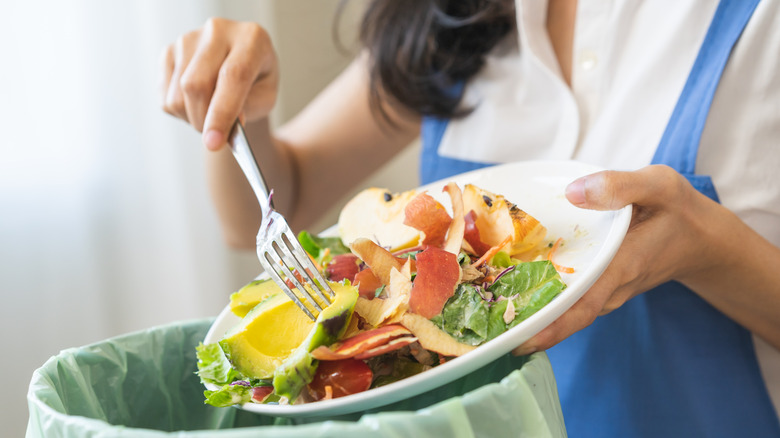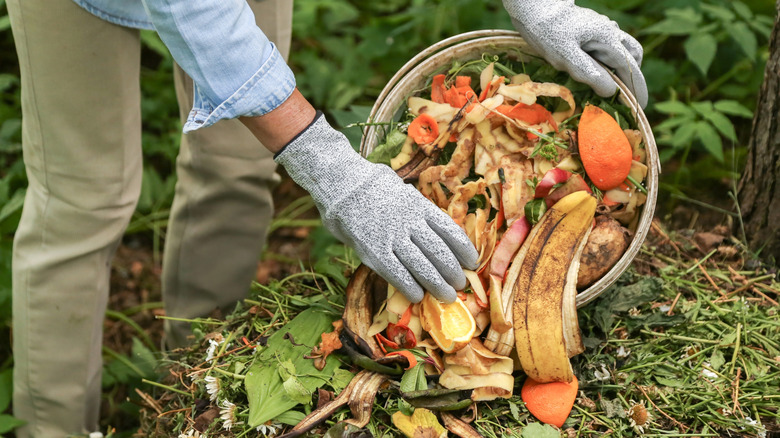The US State That Wastes The Most Food
Food waste is a big problem. In the U.S., we use land, resources, and energy to produce food and then send 30 to 40% to landfills. This comes out to billions of pounds of wasted food and billions of dollars literally thrown in the trash. According to a report by the Auguste Escoffier School of Culinary Arts, no state fares worse on this than Arizona. By analyzing two studies, researchers measured the amount of food discarded in each state and compared it to national averages. Arizona received a shocking score of 100/100 with an estimated 1,025 pounds of food thrown away per person every year. There are more than 7.1 million people living in the state, so this comes out to 7.3 billion pounds of waste.
To see just how bad Arizona fares in this ranking, let's compare it to the second most wasteful state, Maryland, which received a score of 87.89 out of 100. The other three states in the top (or bottom?) five are Arkansas (81.06), Kentucky (79.14), and Illinois (78.60). All other states in the top 10 (Alabama, Tennessee, Mississippi, Georgia, and Nevada) are either in the South or the Southwest of the country.
At the other end of the spectrum, Washington was ranked as the state that wastes the least amount of food, with a score of 0 out of 100. This state throws away only 293 pounds of food per person annually, which translates to almost 2.3 billion pounds for the 7.7 million people that call this state home.
What causes food waste and what can we do about it?
Consumers are partly responsible for the food waste problem since we often buy more than we actually eat. But the issue begins well before food reaches our kitchens. According to the National Resources Defense Council, about 17% of food rots before it even leaves the farm where it was grown. Though it's normal for a portion of crops to be lost before harvesting, farmers often plant much more than they can realistically harvest. This works to safeguard them in case of unfavorable climate or crop diseases, yet it creates excess waste when things do go right. Food processing companies don't do much better, being responsible for 15% of wasted food as they prepare the products for consumers. Finally, grocery stores account for around 20% of discarded food, often throwing away perfectly good items simply because they don't meet aesthetic standards.
Even so, individual consumers are responsible for a staggering 48% of food that is not eaten. While we can't necessarily change what happens in farms or grocery stores, we can take small steps to reduce our own food waste. Being realistic about how much food you'll actually eat every week is the first step. You can also look into food banks and/or composting programs in your city. Or, if you have a yard, start your own compost pile. It's actually much easier than you'd think, and you'll get high-quality fertilizer for free. Your plants and your wallet will thank you.

